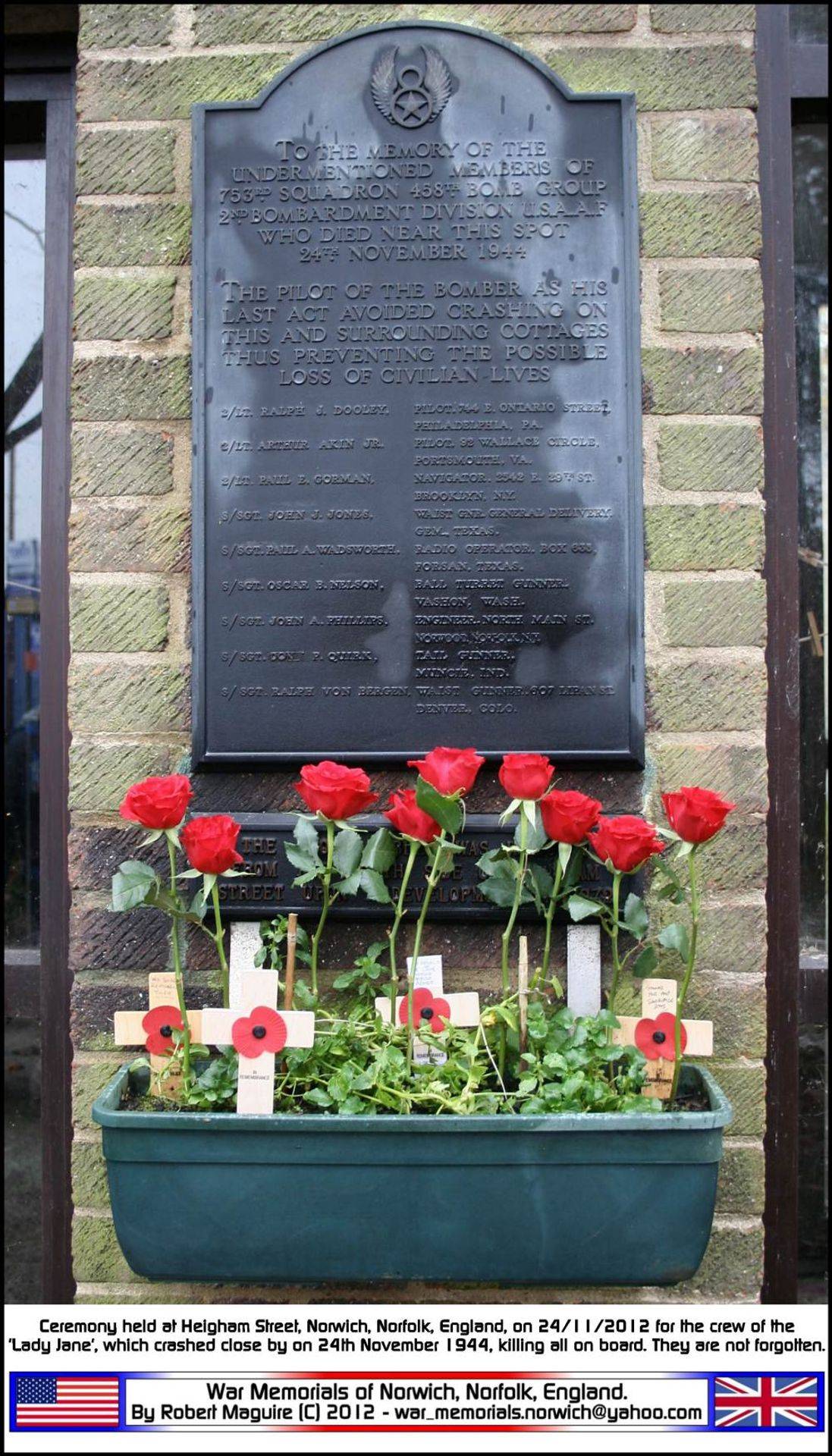Dooley Crew – Assigned 753rd Squadron – September 9, 1944
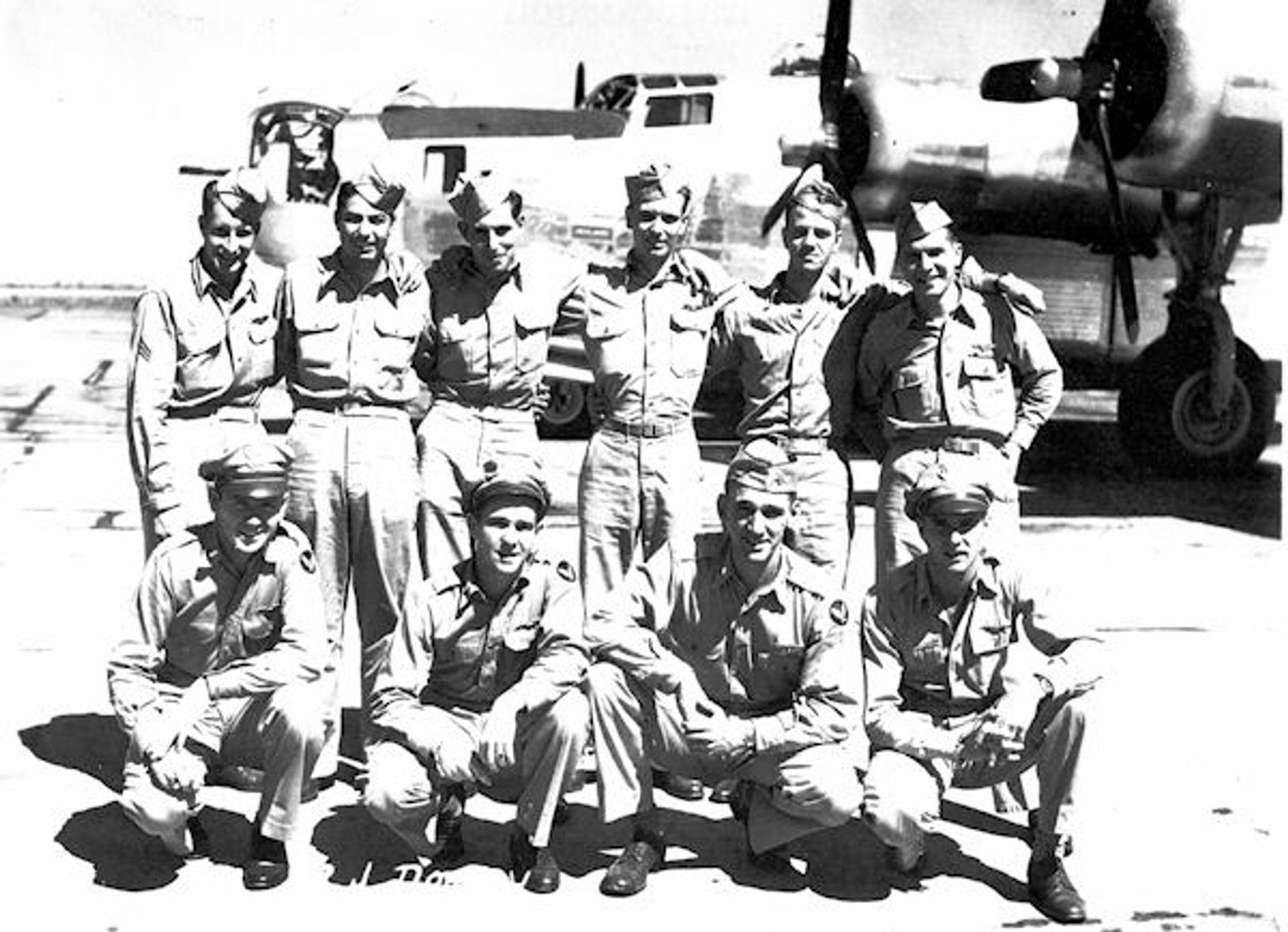
(Photo: 2ADA Journal)
Crashed on Practice Mission November 24, 1944 – AR #45-11-24-516
| Rank | Name | Serial # | Crew Position | Date | Status | Comments |
|---|---|---|---|---|---|---|
| 2Lt | Ralph J Dooley | 0821971 | Pilot | 24-Nov-44 | DNB | Philadelphia, PA |
| 2Lt | Burton W Wheeler, Jr | 0822869 | Co-pilot | 06-May-45 | CT | Rest Home Leave AAF 523 |
| 2Lt | Paul E Gorman | 0723515 | Navigator | 24-Nov-44 | DNB | Newton, NJ |
| 2Lt | John Kowalczuk | 01048051 | Bombardier | 06-May-45 | CT | Rest Home Leave AAF 523 |
| S/Sgt | Paul A Wadsworth | 38345079 | Radio Operator | 24-Nov-44 | DNB | Forshan, TX |
| S/Sgt | Johnie J Jones | 38106801 | Flight Engineer | 24-Nov-44 | DNB | Hemphill County, TX |
| S/Sgt | John A Phillips | 32494276 | Top Turret Gunner | 24-Nov-44 | DNB | Norfolk, NY |
| S/Sgt | Oscar B Nelson | 19030249 | Ball Turret Gunner | 24-Nov-44 | DNB | Vashon, WA |
| S/Sgt | Ralph W VonBergen | 37341753 | Waist Gunner | 24-Nov-44 | DNB | Denver, CO |
| S/Sgt | Don P Quirk | 35169768 | Tail Turret Gunner | 24-Nov-44 | DNB | Cambridge American Cemetery |
2Lt Ralph Dooley and crew were assigned to the group on a busy day. Two of its combat crews (one on Detached Service to Scotland) were lost on operational missions, and one crew crashed during a training flight. Dooley had arrived just in time to partake in the Truckin’ Missions during September, flying four of these gas hauls to Lille, France. At the beginning of October the group went back on operational status. Dooley and crew had a rather short career with the group, flying eight combat missions (not including two abortive attempts) in their 10 weeks with the group. Unfortunately their tour ended abruptly, not in combat, but on a practice mission on a cold and foggy November day just before Thanksgiving.
2Lt Burton Wheeler and 2Lt John Kowalczuk were not on the practice mission that day. They would later both complete their tours and be rotated back to the States. Flying as co-pilot that day was Ralph Dooley’s good friend, 2Lt Arthur C. Akin who had his own crew. Akin and Dooley were both assigned with their crews on the same day. He was filling in for Burton Wheeler who had just lost his brother, a pilot in the 94th Bomb Group flying B-17’s out of Bury St. Edmonds. John Kowalczuk was not along, as he had been removed from the crew to undergo training to be a lead bombardier.
————————-
ACCIDENT REPORT 45-11-24-516
On 24 November 1944 at 1730 hours, A/C B-24 (H) 42-95133 returning from a Practice Mission and in the process of making an instrument landing approach to AAF Station 123. The weather was: 3900 yards Viz, with 400-600 foot ceiling, 10/10ths coverage and the wind NW at 12-14MPH.
The A/C hit the steeple of St. Philips Church on Hamm [sic] (actually Heigham) Road, damaging the right wing and right tail assembly and continued 1000 yards, apparently in normal flight at which time the right wing dropped and the ship crashed and burned. Wreckage shows that landing gear was retracted.
Mr. A. Hindry and Mr. George Baxter, employees of Baker Street Corporation and eye witnesses of the accident declared the A/C descended at a steep angle and in an abnormal flying attitude.
The result was total loss of A/C and all personnel. Damage to civilian property was negligible. There were no civilians injured.
Missions
| Date | Target | 458th Msn | Pilot Msn | Serial | RCL | Sqdn | A/C Msn | A/C Name | Comments |
|---|---|---|---|---|---|---|---|---|---|
| 22-Sep-44 | HSF to LILLE | TR06 | -- | 42-52737 | K | 489BG | T4 | THE SHAFT | TRUCKIN' MISSION |
| 25-Sep-44 | HSF to LILLE | TR08-1 | -- | 41-28705 | X | J4 | T4 | YE OLDE HELLGATE | 1ST FLIGHT - CARGO |
| 26-Sep-44 | HSF to LILLE | TR09 | -- | 42-95001 | Z | 44BG | T7 | TS TESSIE | TRUCKIN' MISSION |
| 30-Sep-44 | HSF to LILLE | TR13 | -- | 42-94975 | M | 44BG | T7 | SHIP FROM SHIPDHAM | TRUCKIN' MISSION |
| 07-Oct-44 | MAGDEBURG | 130 | ABT | 44-40134 | R | J4 | -- | UNKNOWN 039 | #1 SUPER CHG INOP |
| 09-Oct-44 | KOBLENZ | 131 | 1 | 42-95133 | K | J4 | 2 | LADY JANE | |
| 14-Oct-44 | COLOGNE | 133 | 2 | 42-95133 | K | J4 | 4 | LADY JANE | |
| 17-Oct-44 | COLOGNE | 135 | 3 | 42-110163 | M | J4 | 30 | TIME'S A WASTIN | |
| 19-Oct-44 | MAINZ | 136 | 4 | 42-95133 | K | J4 | 5 | LADY JANE | |
| 26-Oct-44 | MINDEN | 138 | 5 | 44-40277 | P | J4 | 17 | MISS USED | |
| 02-Nov-44 | BIELEFELD | 140 | 6 | 42-95133 | K | J4 | 9 | LADY JANE | |
| 08-Nov-44 | RHEINE | 144 | ABT | 44-40277 | P | J4 | -- | MISS USED | COULD NOT KEEP UP w/GRP |
| 09-Nov-44 | METZ AREA | 145 | 7 | 42-110163 | M | J4 | 35 | TIME'S A WASTIN | |
| 21-Nov-44 | HARBURG | 148 | 8 | 44-40285 | H | J4 | 43 | TABLE STUFF | |
| 24-Nov-44 | Practice Mission | -- | ACC | 42-45133 | K | J4 | -- | Lady Jane | HIT NORWICH CATHEDRAL |
Lille, France – September 1944

L-R: Oscar Nelson, Burton Wheeler, Paul Wadsworth, Paul Gorman (with map), Don Quirk, Johnie Jones, and Ralph Dooley
(Photo: AFHRA)
Dooley, with a limited crew consisting of Quirk, Wheeler, Wadsworth, Gorman, Von Bergen and Jones, had a flight to Lille on the 23rd returning the next day, 24th. On the 25th they did the round trip to Lille and back in one day.
On the 26th John Kowalzcuk went along for what turned out to be an eventful ride. During the flight over to Lille, Paul Gorman decided to check out his dead reckoning navigation. Burt Wheeler remembers, “I was flying at 3,000 feet and as we made landfall I saw tracer shells from the ground passing just a few yards in front of the plane. Following them down, I saw a quad 20mm anti-aircraft gun in the street below busily trying to shoot us down.
“We now knew we had failed to make landfall over the intended friendly territory, but were not sure why. We made the course-change normal for a flight to Lille and held a hasty flight deck conference. As an additional complication to the fast on-coming dark we realized we did not have the colours of the day which might allow a safe return to the base in England. We knew the British antiaircraft crews were nigh perfect with all the practice on V1s. Return was a very risky option.
“We had circled during this time and saw a C-47 Dakota cargo plane heading southeast and decided to follow. It was lost in the dark almost immediately. Then we saw a single strip of lights below indicating a possible runway. I flashed our landing lights and received a green Aldis lamp signal in return. Dooley then proceeded to make a fantastic safe landing in the dark on this strange field.
“The lights turned out to be globular kerosene lamps such as were used to mark highway construction, a single row of them. How Dooley decided which side of the row to land on I cannot remember. The field was sod, with no paved runway, a British Typhoon base. They welcomed us and said they expected to be bombed later that night. They offered a map and a course to Lille, but it was refused. Enough was enough for one day and we caught a ride into Brussels.”
John recalls, “The surface of the runway was rough with bomb craters on both sides and only 3,000 ft. long, but we were down safely and damn glad to find out where we were. We created a lot of excitement with the British who saw the first B-24 loaded with gasoline land on such a treacherous strip. [This airfield is believed to have been B-56 Evere, occupied at the time by 127 Wing 83 Group. Other airfields in the area were B-60 Grimbergen and B-58 Melsbroek occupied respectively by 131 Wing 84 Group and 139 Wing 2nd Group.] The aircraft was not capable of taking off because of the load, so arrangements were made to unload the petrol. They had to find the necessary equipment to handle it and the best thing they found was a manual pump. It would be a long process to empty those tanks so in the meantime they made a real effort to transport us to downtown Brussels. After what we went through it was a blessing to be around for a celebration.”
In Brussels complications continued. Earlier there had been a troop landing by glider and the pilots had been very slow about making their way back to areas where they could be transported back to England. As a result the town Mayor had orders not to assist flight personnel with food or quarters and there were no exceptions.
John recalls, “We stayed one night, September 26th, at the Metropole Hotel and paid the bill with cigarettes. Cigarettes also set two of us up with draft beer at Wieleman’s Lounge nearby. Had a grand time with the crowd.”
The men returned to the airfield the following afternoon to find the fuel was still being unloaded; it was then that Burt Wheeler suggested the possible use of the plane’s fuel-transfer pump located in the bomb bay. This speeded things up, however they were still not ready to take off until the following morning, the 28th.
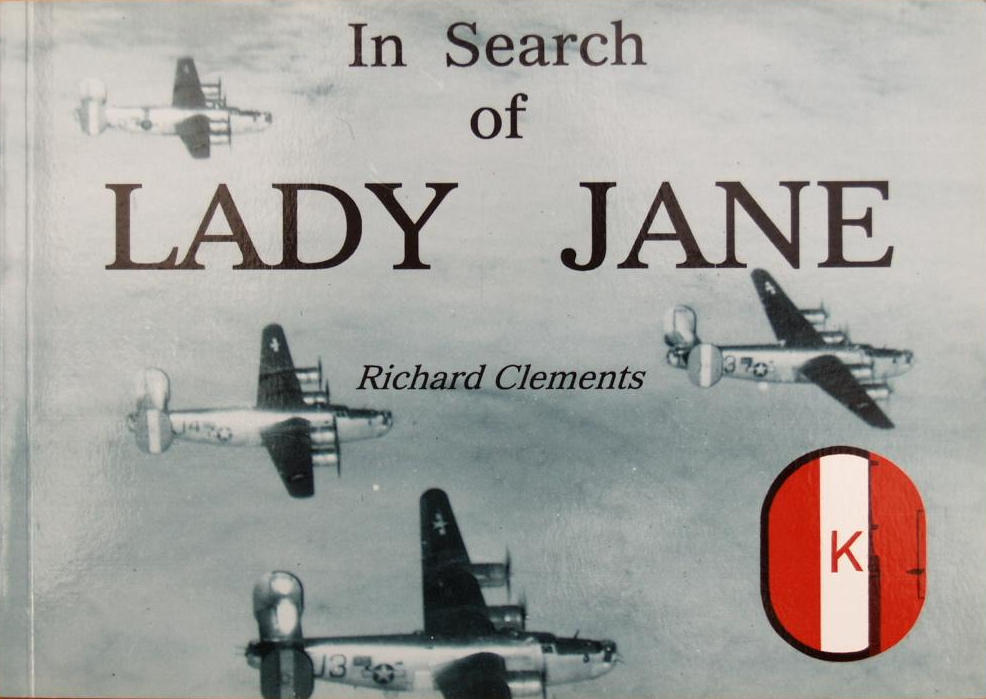
A considerable audience turned out to watch [the] takeoff, sitting on the wings of the Typhoons waiting to see if they would be successful. Burt Wheeler explains that, ”We had to use all the short field takeoff techniques we knew, lifting one wing over the tail of a B-17 Fortress which had crashed some time earlier and then the other wing over the chimney of a burnt out house. Back at base no concern had been felt. They thought we probably suffered a mechanical problem at Lille. The cause of this? John has not been briefed for a strong up-channel wind. We had intended to make landfall at Ostende which was in Allied hands. Instead we were blown up to Zeebrugge which was still German controlled.”
Excerpt from In Search of Lady Jane By Richard Clements
Eyewitness statements – November 24, 1944
1Lt Cliff D. Gersbach – Supply Officer, 752nd Squadron
“I was standing at the corner of Earlham and Mill Hill Road, Norwich, 24 November 1944 at approximately 1700 hours when B-24H Airplane No. 42-95133 made a 180 degree left turn in a vertical bank almost overhead. The airplane was flying about 200 feet above the housetops and I noticed that it was losing altitude (slipping off on the left wing). The turn was so sharp that the wings were vertical to the ground. The airplane started to level out from the turn and disappeared from sight for a moment; by that time it was skimming the housetops; when I heard a sharp crash, which was reported by an RAF Sergeant to be caused when the right wing of the airplane hit the top of the tower on St. Phillip’s Church (Hamm Road). After hitting the church, the airplane reappeared in a steep climb gaining about 300 feet altitude when it fell off on the right wing, crashed and burned.
“The tip of the right wing and part of the right rudder were torn off when the airplane hit the church. The airplane appeared to be under control after hitting the church and it appeared that the pilot stalled it out by trying to gain altitude too fast, causing it to fall off on the right or damaged wing and crash about 1000 yards from the church.
“The airplane seemed to be having no mechanical difficulties and the engines were apparently running normally. The landing gear was retracted.”
2Lt Edwin J. Sealy – Pilot, 755th Squadron
“We had just broken into the clear after an instrument letdown and had circled the town of Norwich once when we saw an aircraft approximately two miles in front of us apparently flying straight and level. The plane started a steep bank to the left and continued the bank onto its back. Then it dived into the ground and exploded immediately. I learned later that this A/C was 113-K of my own base.”
1Lt Joseph S. Williams – Statistical Control Officer
1. At approximately 1700 hours, 24 November 1944, I observed an aircraft from our base in a 90 degree left bank at an altitude of approximately 200 to 250 feet. The aircraft was mechanically all right to all appearances, all engines running and there appeared to be no damage of any sort. The landing gear was up.
2. The aircraft was slipping badly while in the bank, although the turn appeared to have been a long one and not short or abrupt. The aircraft seemed to handle all right although I am not qualified to state accurately. The mist and fog was very bad at the time and the ceiling was not more than 250 to 300 feet, with “clouds” of fog and mist rolling across the river toward Mill Hill Road.
3. When I first saw the aircraft I was on Mill Hill Road facing the river. The aircraft leveled out of the vertical bank and disappeared behind trees and illegible. At this time I heard a crash. Seconds later I saw the aircraft (apparently under control) climbing gently with a slight incline to the right. The aircraft then went into a vertical right bank and fell. After the crash just mentioned I did not observe and damage to the aircraft. However the fog and mist were quite heavy.
4. Later, I went to the scene of the first crash and heard and found that the aircraft had hit the steeple of the St Phillips Church. Here I found the upper panel of the right wing tip (about 10 to 15 feet long) and the right rudder. Pieces of the wing were still on the church roof. The aircraft wing had hit about 4 to 5 feet from the top of the steeple, which is about 40 to 60 feet high. Apparently the aircraft was in a moderate right bank when it hit the church, although it could have been in level flight, just missing the rooftops, when this first crash occurred. The aircraft was not turning, but was trying to level off when it disappeared behind the trees and I heard the first crash. It must have been flying in a straight line even though in a bank.
5. At the scene of the final crash I substantiated my theory of the aircraft having hit the ground in a vertical bank since there was no damage to property along the line of flight. No explosion was heard – just a “whoosh” as the gasoline ignited. The aircraft landed on a railway spur some 500 feet from Dereham Road near the Norwich City Station. Te spot was about a quarter of a mile in a straight line from the church.
SUBJECT: Bad Visibility Training
TO: Air Inspector, 458th Bombardment Group, AAF 123, APO 558
1. Reference your request as to amount of bad visibility training 2nd Lt. Dooley had from this office the following is submitted: All Crews in indoctrination period are given the following pointers:
A) If visibility is poor in Gt. Britain you are to fly at 2000’ in the southeast, but if in the west or north fly at 5000’. This will enable all hills or obstructions to be cleared.
B) Crews will find that maximum altitude and a tight traffic pattern will allow you to hold the field better and keep away from the built up area in bad weather.
C) Crews are instructed that fields will fire off yellow flares at approach end of runway in conditions of bad visibility.
D) Fields with landmark beacons will put them in the position near the approach of the runway 50 yards to the left. Light will be steady – not flashing.
E) Horsham crews will find that in bad visibility approaches from the north are safest. A/C should skirt southern edge of field due to city. Heavy A/C advised that landings on Runway 05 or 35 call for low approach over the city. (this last point has been teletyped out to all fields in U.K.)
F) Complete briefing has been given all crews on the use of approach lights of USA hi-intensity lighting system/contact strips and fog dispersal units at emergency fields.
ROBERT C. SELLERS
Captain, Air Corps
Flying Control Officer
A Tribute To A Gallant Crew
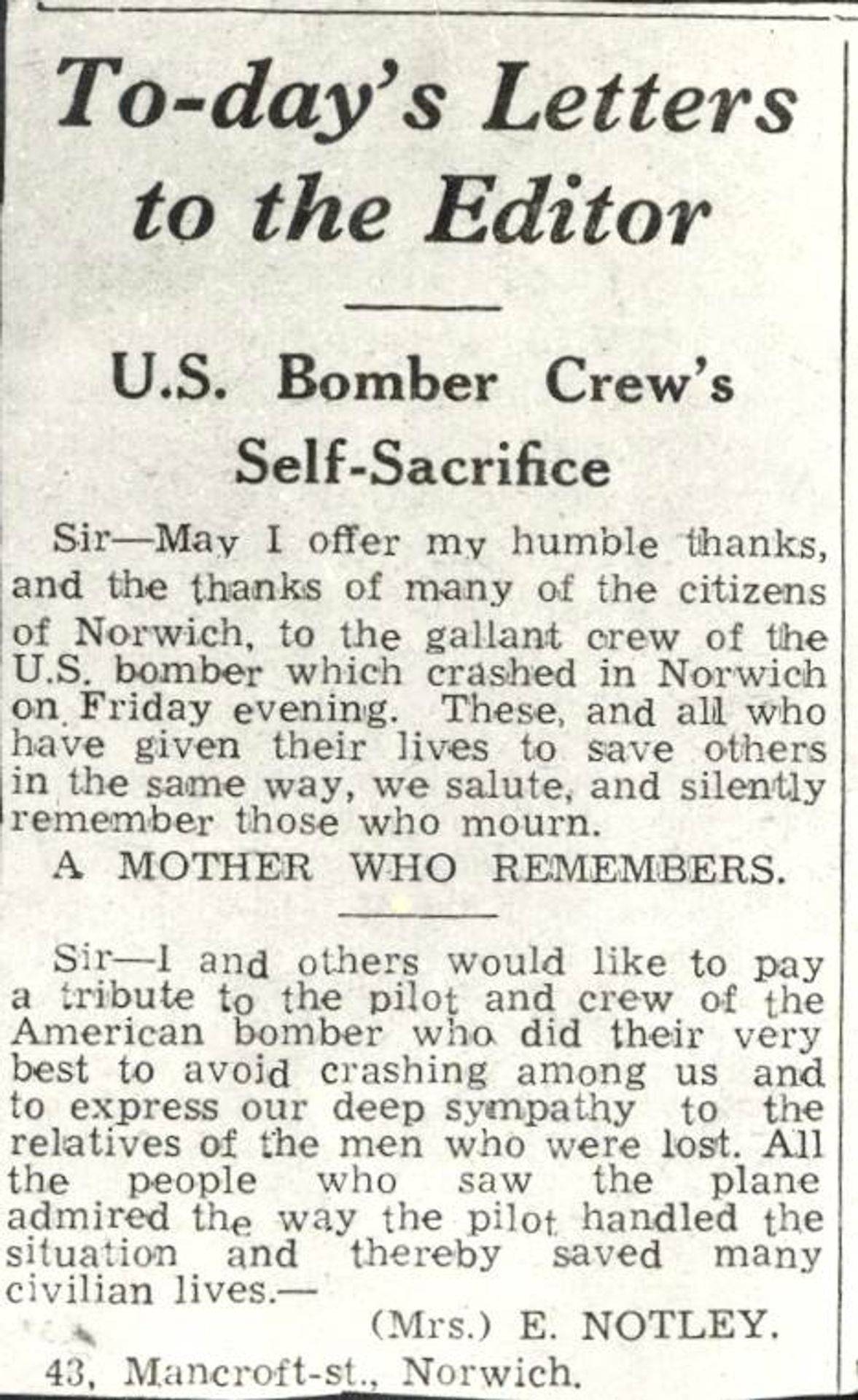
On 7 Nov [sic] we lost Lt Dooley and his crew under distressing circumstances. The group having been stood down on [an] operational mission that day, a formation was airborne on a practice mission. As the A/C returned to the base, the weather had closed in and it was a question of whether our boys would get down safely. The field personnel were certainly sweating them down that day. Overhead the A/C were flying at almost building level and in a somewhat broken pattern. It was eerie to look up, see a black shape and landing lights so near to the ground that one felt as if he could almost stand on the roof of one of the buildings and touch the planes as they went by.
Without letup flares were being fired in an effort to help the boys locate the runways. One by one they landed and soon there were but a few still flying in the muck. Lt Dooley attempted a landing but overshot the field. He took off trying desperately to gain altitude, but could not. Directly over the town of Norwich a church steeple loomed in his way and off came the right stabilizer and severely damaged a wing. According to the local townspeople who were near the scene of the crash, Lt Dooley manipulated his A/C so that it crashed in an open dump, causing no civilian casualties nor damage. All members of the crew perished din the crash. The entire crew has been recommended for the Distinguished Flying Cross. We think the following letters (at left) published in the Norwich newspaper can pay better tribute than anything we might say.
(458th Group Records, Article Courtesy Anne Zimmer)
St Philip’s Church – Norwich
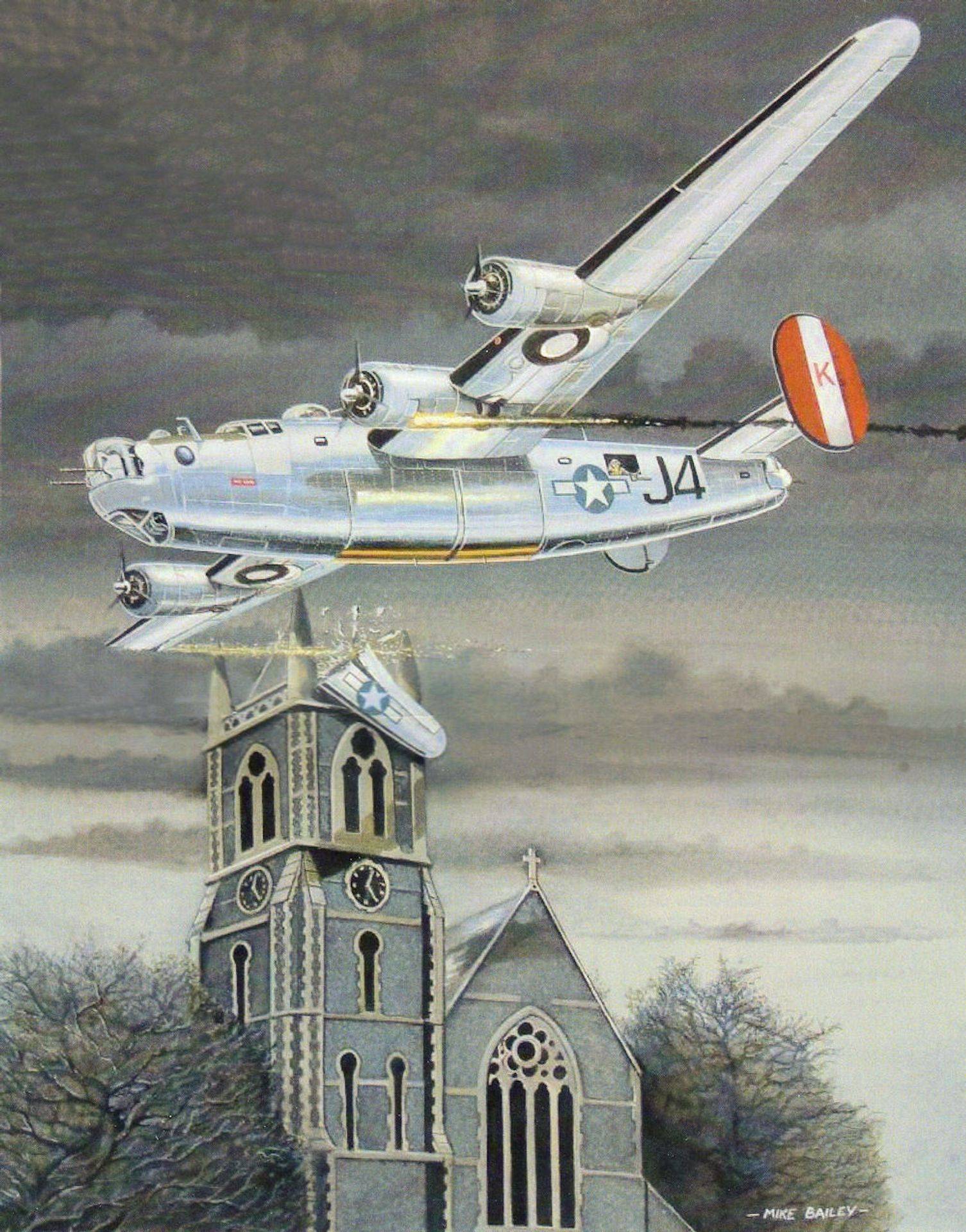
Painting: Mike Bailey
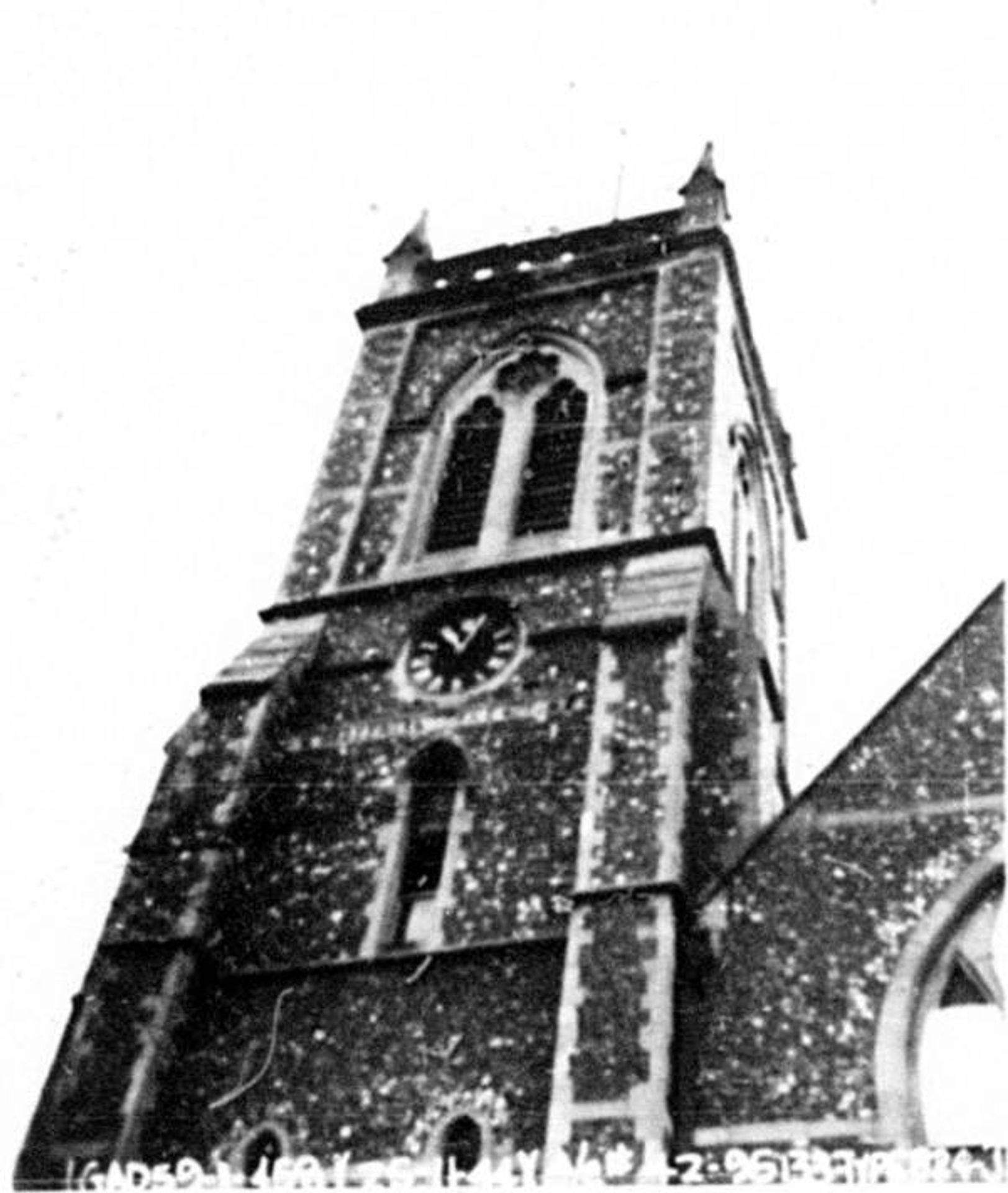
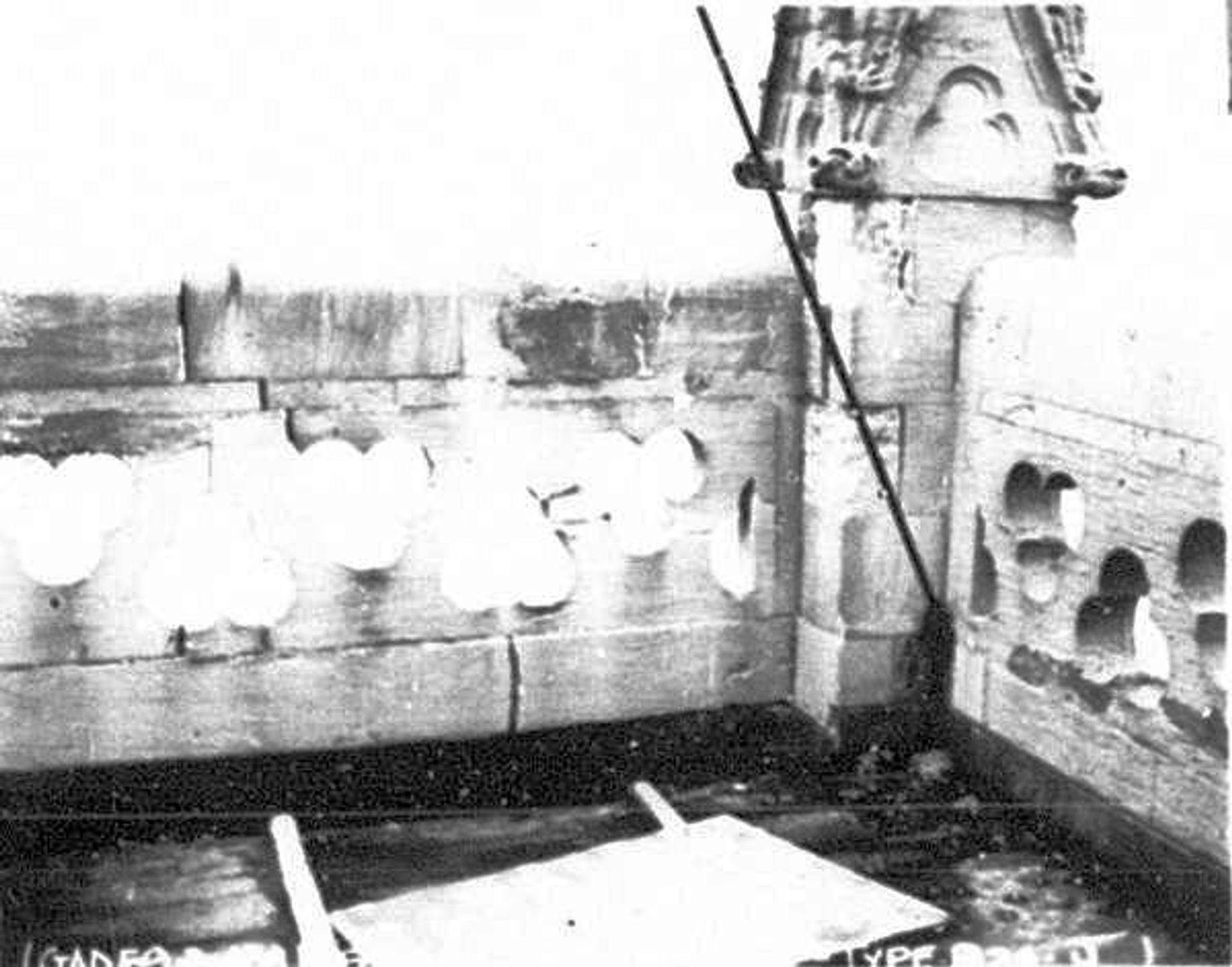
Photos of the church and part of the right wing panel taken the next day.
Barker Street Depot
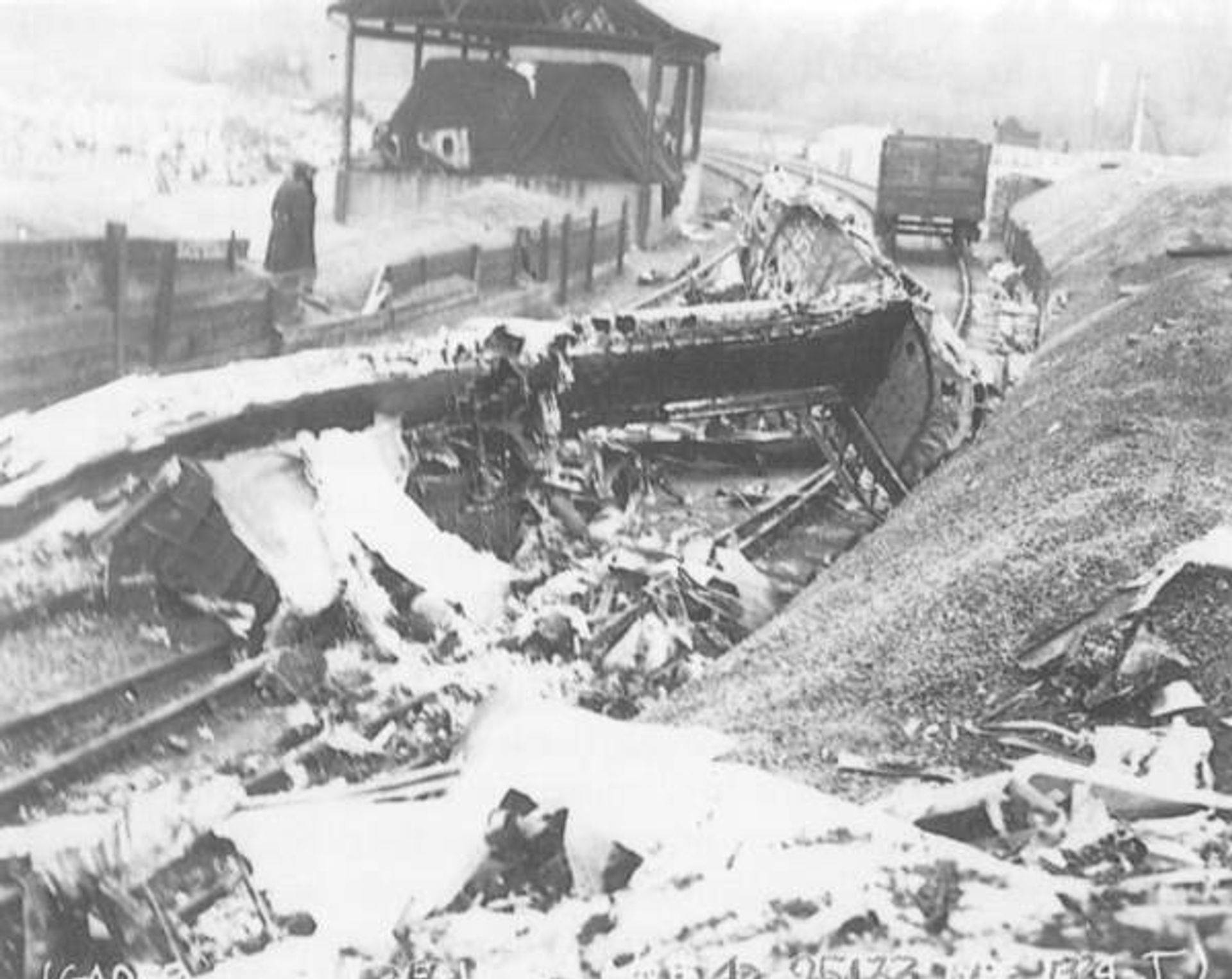
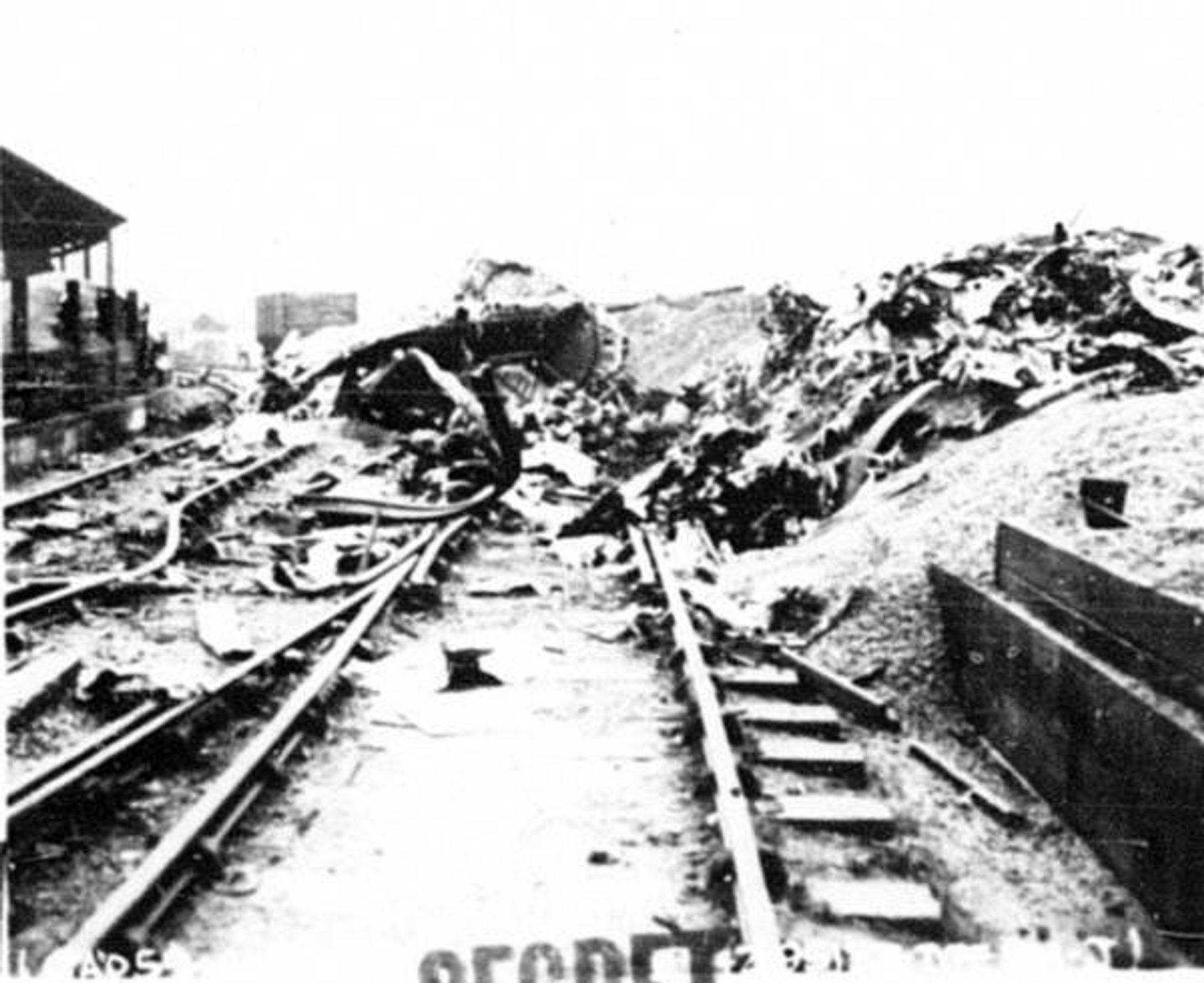
What remains of Dooley’s aircraft on the rail tracks. No civilians were hurt, neither was property damaged.
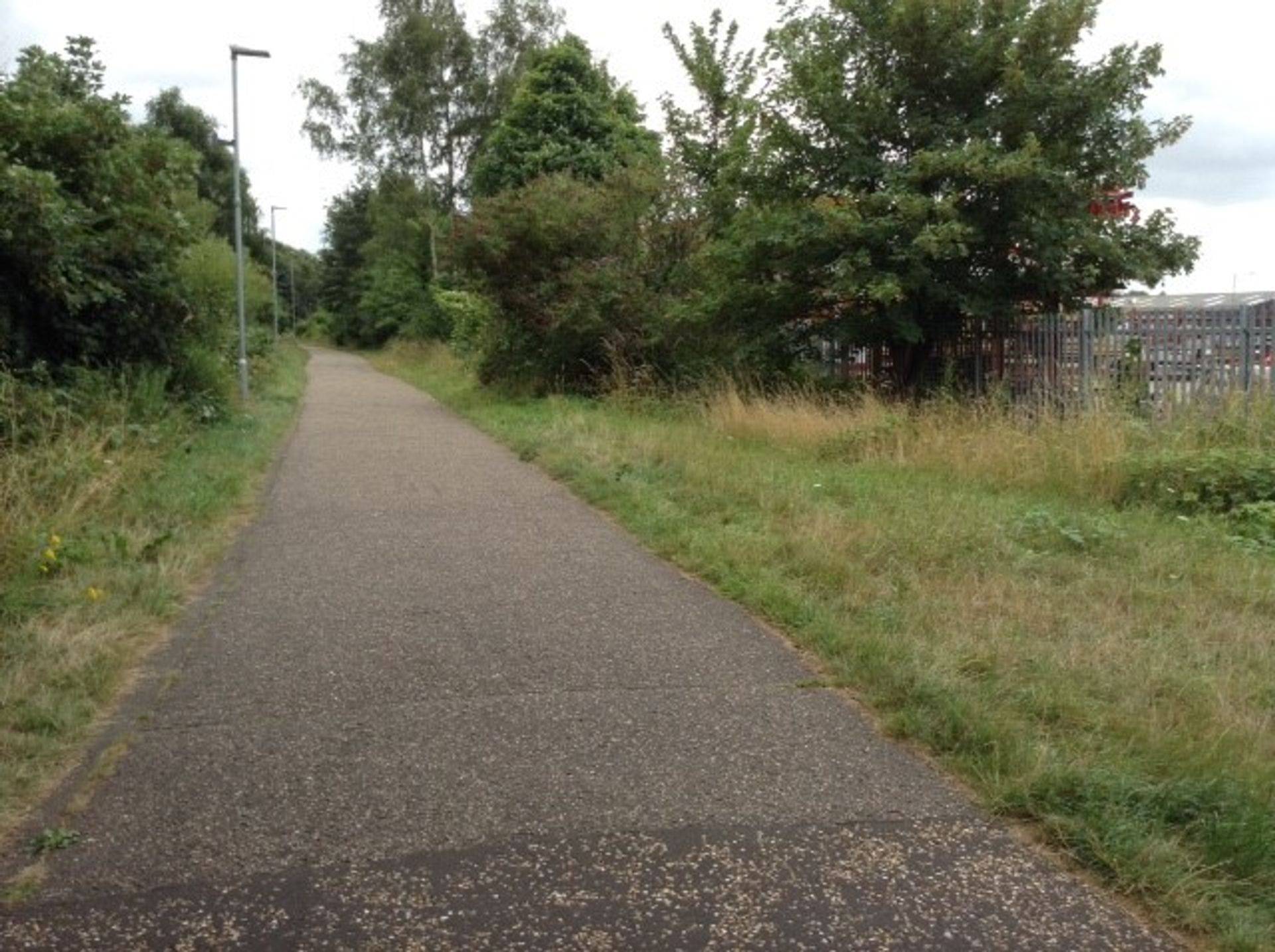
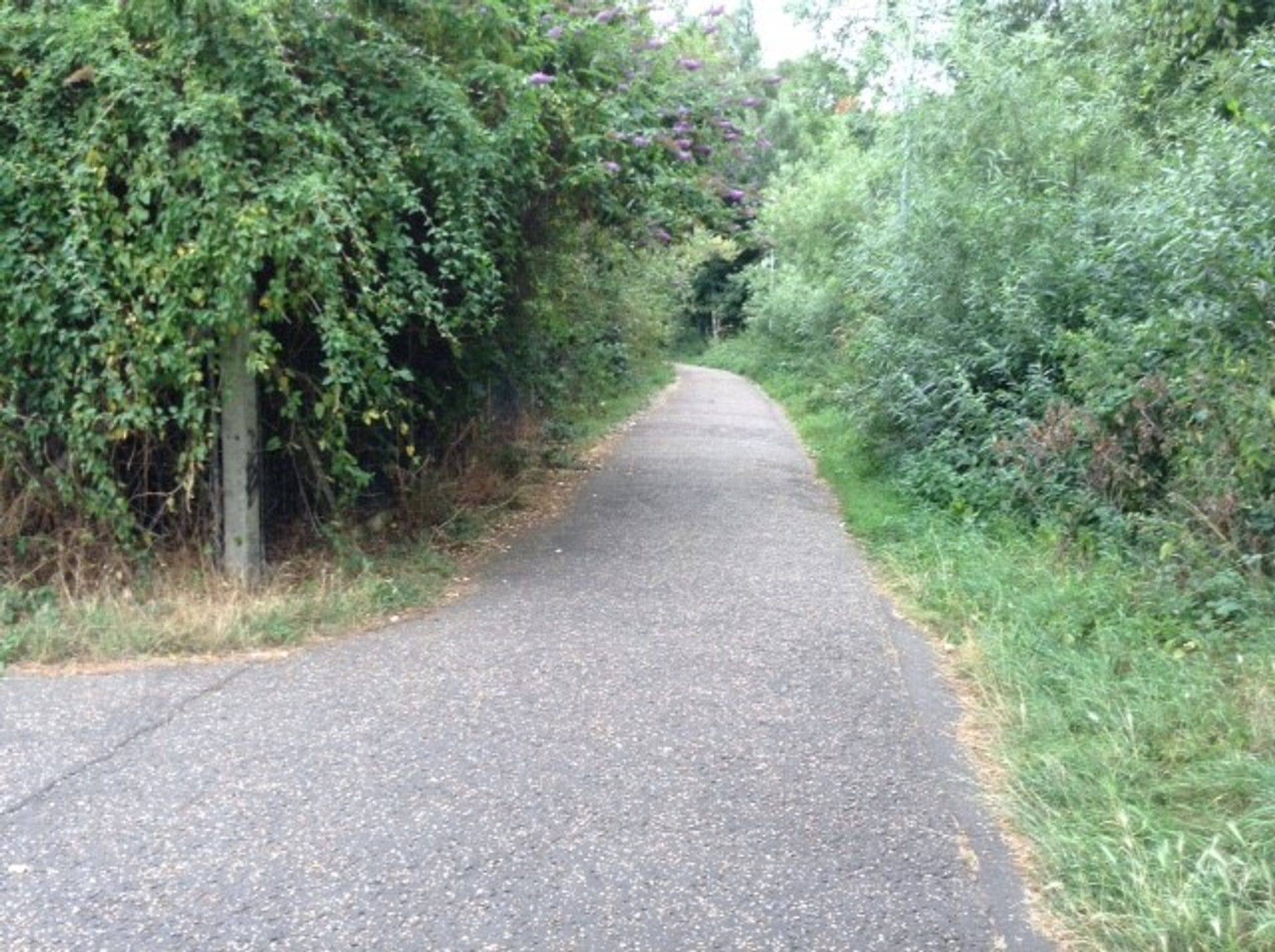
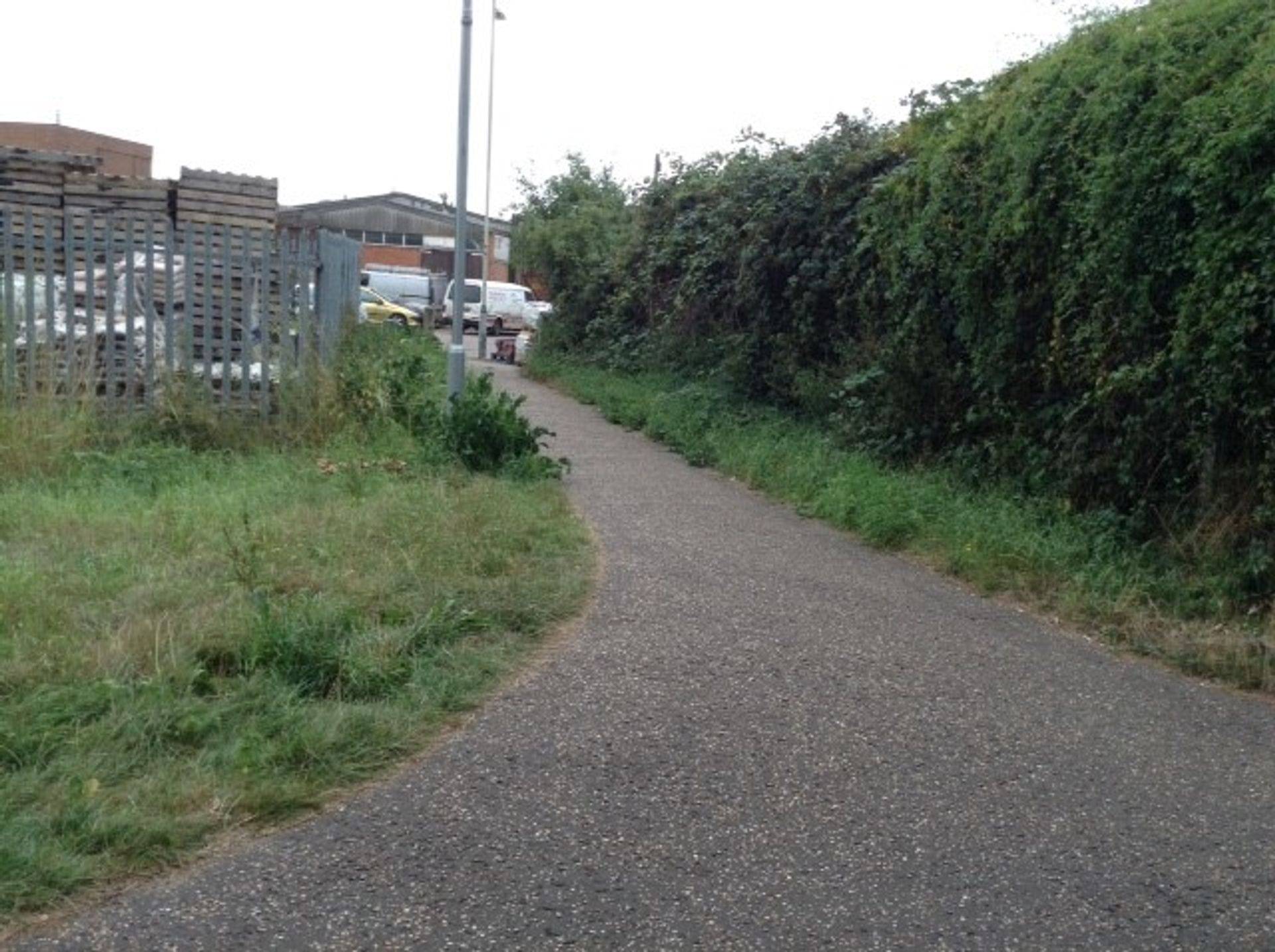
The crash site as it appears today
(L-R) Pic.1 – Matches with picture, above left. Pic.2 – Left hand curve visible. Former railway line now a cycle way. Pic.3 – This was once open ground. The houses Lt Dooley avoided were beyond the warehouse shown.
(Photos courtesy: Tony Burrows)
Heigham Street Memorial
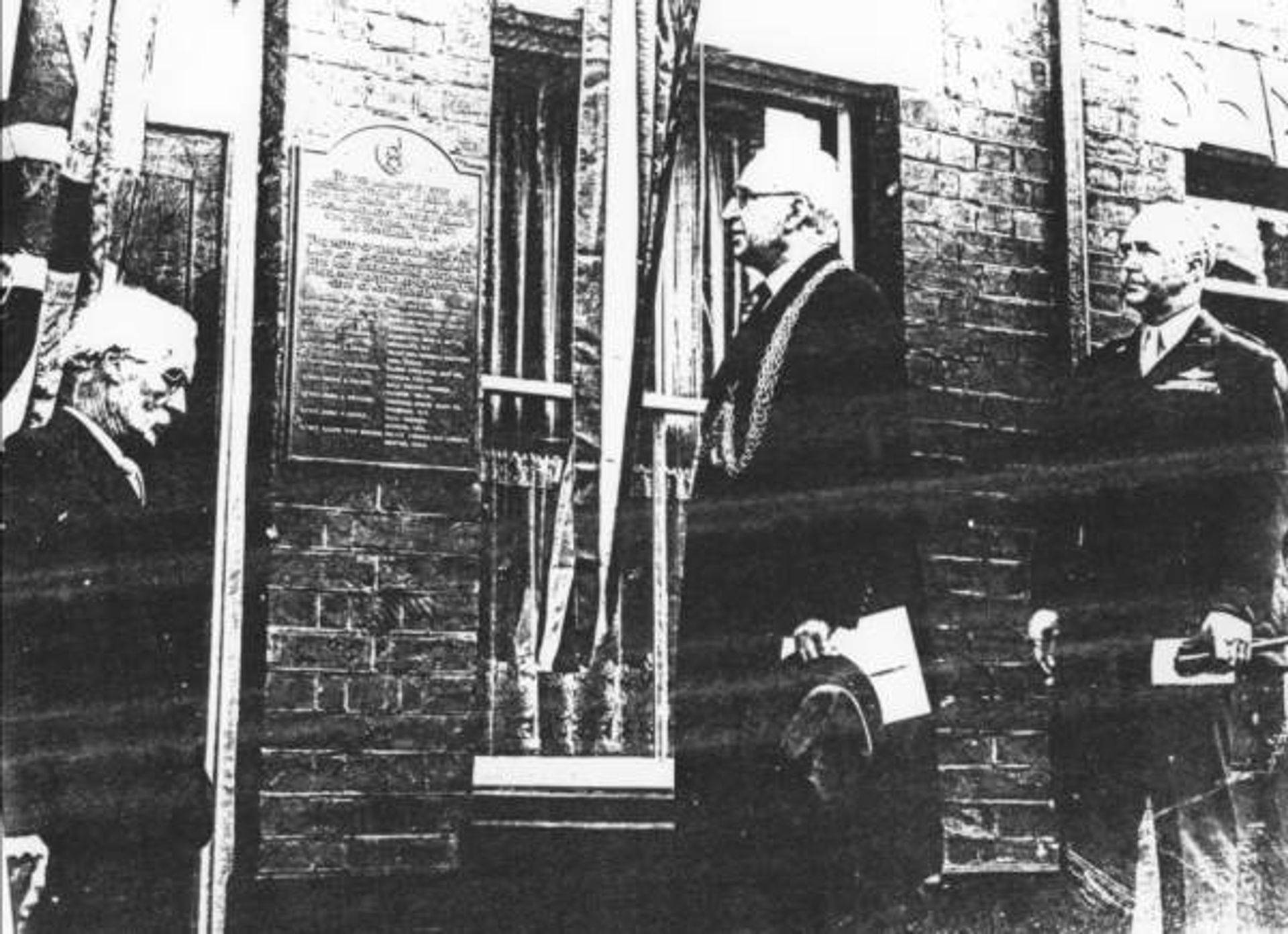
Norwich Memorial to U.S. Bomber Crew
On November 24th, 1944, an American bomber crashed on to the Barker St. Depot, Norwich, killing the nine members of the crew. The last thought of the pilot was for others. Avoiding densely populated Heigham St. he brought the machine down on open ground.
In commemoration of this gallant deed, and in memory of those who lost their lives, residents of Heigham St. district subscribed for a bronze plaque, which has been placed on premises occupied by Mr. A. G. Jermy, at 196 Heigham St. Yesterday, in the presence of Brig-General E. C. Kiel, who served as Deputy Commander of the 8th American Air Force under Lieut-General J. R. Doolittle, the Lord Mayor of Norwich (Mr. E. F. Williamson) unveiled the memorial.
“His Last Act”
The plaque, designed by Mr. C. W. Hobbis reads: “To the memory of the under mentioned members of 753rd Squadron, 458th Bomb Group, 2nd Bombardment Division, U.S.A.A.F., who died near this spot on the 24th November 1944. The pilot of the bomber, as his last act, avoided crashing on this and surrounding cottages, thus preventing the possible loss of civilian lives.
“2/Lt. Ralph J. Dooley, pilot, 744 E. Ontario St., Philadelphia, Pa; 2/Lt. Arthur Akin, Jr., pilot, 92 Wallace Circle, Portsmouth, Va.; 2/Lt. Paul E. Gorman, navigator, 2542 E 29th St., Brooklyn, N.Y.; S/Sgt. John J. Jones, waist gunner, General Delivery, Gem, Texas; S/Sgt. Paul A. Wadsworth, radio operator, Box 635, Forsan, Texas; S/Sgt. Oscar B. Nelson, ball turret gunner, Vashon, Wash.; S/Sgt. John A. Phillips, engineer, North Main St. Norwood, NY; S/Sgt John P. Quirk, tail gunner, Muncie, Ind.; S/Sgt Ralph VonBergen, waist gunner, 607 Lipan St., Denver, Colo.”
Mr. Fred Henderson, returning alderman for the ward, said he knew America intimately and knew that the spirit shown by the men they commemorated that day was the spirit he found dominating Americans almost everywhere. Although the plaque commemorated the local incident, it was one of many… showing the spirit of friendship and cordiality between ourselves and our friends across the Atlantic.
Spontaneous Gratitude
The Lord Mayor said that this was in no sense a city function. It belonged entirely to the people of the district. It was the result of a spontaneous thought of gratitude and admiration arising in the heats of the people who lived there. At the moment of their own great peril the men they remembered thought of others. In a wider sense the 79,000 American airmen who lost their lives in the war were doing the same thing, inasmuch as they gave their lives in the cause of liberty and freedom.
Brig-General Kiel said that in paying tribute to members of the bomber crew they complimented all the 180,000 men and women of the American Air Force who victoriously shared the sky ways with the RAF.
“No two Allied forces could have cooperated more thoroughly than did your RAF and our 8th Air Force,” he added. “We have proved our ability to work together in war. We will do so in peace. It was always our aim to accomplish our mission, not only without personal injury or damage to the people of England, but with the least possible inconvenience. While I do not wish to minimize the sacrifice of Lt. Dooley and his crew, I believe that every one of our pilots would have acted in a similar manner under such circumstances if mentally and physically able to do so.”
Our picture shows the Lord Mayor unveiling the plaque. On his right is General Kiel, and on his left Mr. Fred Henderson.
(1945 News article courtesy: John Luft)

